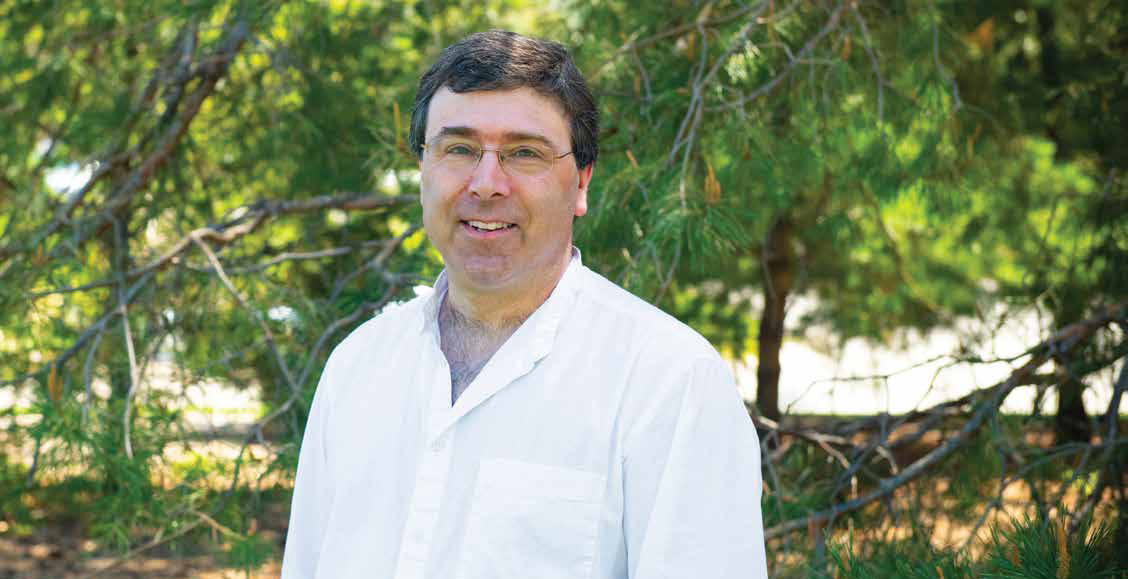
Statistics in Agroecosystems:
Leveraging Prediction for Agricultural Production

Nebraska has a wealth of biodynamic data gained from its productive agriculture and its bountiful natural resources. Because of this breadth of data types, Bertrand Clarke, professor and chair of the Department of Statistics, said the University of Nebraska–Lincoln is a first rate place to study statistics.
As part of the Institute of Agriculture and Natural Resources (IANR), the Department of Statistics uses existing statistical methods in innovative ways and invents new techniques to analyze data and reach conclusions about the systems studied by IANR researchers. Clarke said that statistical analysis and the methodological work that supports it helps agricultural and natural resources professionals make sounder decisions for the landscapes and ecosystems throughout Nebraska and beyond.
The future for agriculture and natural resources data analyses, in Clarke’s eyes, is in prediction. Decision-making, however, is even more complex than prediction.
“You can’t go back in time, press replay, and evaluate how good your decision was compared to other decisions you didn’t make,” Clarke said.
For example, a farmer may use statistical analysis to decide the right amount of irrigation for a field, and when to apply it, to optimize production. This would be based on a prediction of how much water the field needs at various times, but it is the decision that must be optimal. The farmer would have to determine if the decision was effective by analyzing how the crops in the field grew. If the amount of irrigation water did not increase production satisfactorily in the absence of knowledge of what would have happened had he or she made a different decision.
Clarke said the complex nature of decision-making leads to many agricultural and natural resources professionals using consulting services for help with statistical analyses.
Statistic Consultants
A key arm of the Department of Statistics is its consulting work. The Statistical Cross-disciplinary Collaboration and Consulting Lab (SC3L), informally known as the Help Desk, assists Nebraska graduate students, faculty and staff in making decisions and other inferences for agricultural and natural resources systems.
Clarke said that recognizing the maturation of consulting as a leading branch of statistics will help to set Nebraska apart from other universities. The Department of Statistics faculty has expertise in various established and emerging areas of statistics, which helps them build collaborative relationships with faculty members from other disciplines throughout IANR.
Through collaboration and consulting, Nebraska’s statisticians design complex experiments, conduct analyses and make recommendations for agricultural producers. They also study other biomedical populations and other aspects of data to keep current with contemporary trends and to make predictions and other inferences. According to Clarke, predictions help the university’s researchers study natural resources, other ecosystems, and other topics germane to IANR research areas.
Prediction and Decision-Making
Approaching statistical problems predictively can help agricultural and natural resource professionals make decisions. The reason is that predictions can be evaluated against measurements, in particular through online techniques. According to Clarke, this helps ensure that scientists make inferences that are consistent with the systems they study.
For example, if a researcher predicted that the city would get 3 inches of rain tomorrow, he or she can simply wait until tomorrow to see how much rain the city will actually got. If the city only received 2.5 inches of rain, the researcher knows that his or her prediction was incorrect by 0.5 inches of rain.
Based on this information, the researcher can determine whether or not his or her prediction was valuable in making decisions. The same is true for a farmer predicting future data for his or her field. Technological advancements help speed this process.
[GRAPHIC: an additional photograph of a farmer taking data samples in a field.]
Technological Advancements
The field of statistics continues to evolve and grow “as a consequence of massively improved technology for data gathering,” according to Clarke. With the influx of data obtained in multiple ways in agricultural and environmental systems, there are more demands on producers to use statistics when managing ecosystems and farms.
“Many fields which were historically not very quantitative have become extremely quantitative,” Clarke said. He explained that businesses across all industries — particularly agriculture — are relying more on quantitative data before making important decisions. With more data types than ever to collect and emerging techniques for how to make inferences from them, the Department of Statistics has more opportunities than ever to integrate itself within IANR. One example, among many, is sensor data. Another is streaming data collected by Unmanned Aerial Vehicles.
“The whole field of statistics and computational sciences is itself a moving target,” Clarke said. “The world has changed, chiefly through increased data gathering, and statistics has to change with it.” Society has adapted to the evolving trends in technology, specifically advances and accessibility, and according to Clarke, statistics has been evolving to stay valuable amidst these trends.
“This is simply the onward march of science,” he said of this adaptation of statistics to recent technological advancements. Indeed, mainstream statistics has always been continuously reinvigorated by new data types and technologies as society progresses.
History
In July 2003, the university merged the Department of Biometry in IANR and the statistics division of the Department of Mathematics and Statistics in the College of Arts and Sciences to create what is now known as the Department of Statistics. In the summer of 2018, the Department of Statistics moved to be entirely within IANR. Due to its importance in collaboration, consulting and research, statistics as a field has been growing rapidly. This is likely to continue for at least a decade.
For instance, Clarke noted there is a growing importance of statistics and statistical research for precision agriculture and natural resources. Sometimes this falls under the heading “big data”. These sources of data continue to grow, and the Department of Statistics helps IANR’s programs continue to provide cutting-edge research and education. The relationship between IANR and the Department of Statistics is both strategic and critical, according to Clarke.
As data sets become bigger and more complex, Clarke observed, “prediction and testing your predictions against real-world measurements becomes more important, regardless of what statistical techniques you use or philosophy you follow.”